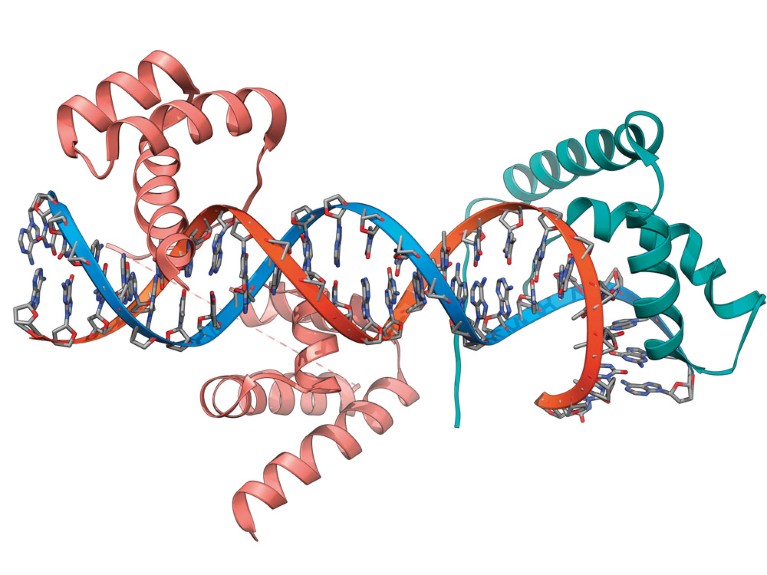
Research suggests that actin tethers together various factors involved in DNA transcription, bringing them alongside regulatory regions of the genome.© LAGUNA DESIGN /SCIENCE PHOTO LIBRARY / GETTY IMAGES
Actin, a protein generally considered a structural componentof cells, is also involved in controlling the translation of DNAinto RNA, a new study has found. The additional complexity revealed in regulating this transcription process, which is the first step in gene expression, may eventually shed light on diseases and disorders that are not understood.
“Usually when people talk about actin, they’re thinking about its role in support, transport, or movement rather than in transcription,” says KAIMRC’s Bader Almuzzaini, the study’s lead author. Following earlier work that suggested actin might be involved in reprogramming gene expression, Almuzzaini used a technique to isolate fragments of DNA attached to actin and then sequence them, enabling them to identify regions of the mouse genome where actin was bound. They found that actin binds throughout the genome and is enriched in specific regions, such as between genes and around promoters that control gene expression, supporting its hypothesized role in regulating transcription.
Next, the team used cells in which actin had been disabled to directly investigate its function, focusing on the regulation ofthe transcription of the ribosomal RNA (rRNA) gene, which plays a central role in protein synthesis. They found a significant decrease in rRNA synthesis in the absence of actin. Further investigation revealed that several molecules involved in controlling transcription were not attached to the rRNA gene when actin was missing.
When the researchers reintroduced actin into the cells, the molecules bound properly to the rRNA gene, and its transcription level went back to normal. “That was an exciting moment,” says Almuzzaini. “Our results all came together and we knew we had a clear story to tell.” These results led the researchers to suggest that actin tethers various factorsinvolved in transcription, bringing them alongside regulatory regions of the genome. Once in place, these factors add andremove tags, known as epigenetic markers, which influence DNA transcription, partly by altering how tightly it is wound.While this particular model might be specific to rRNA and similar genes, the team has shown that actin is involved in regulating other types of genes as well.
For Almuzzaini, this study is just the first step towards understanding diseases and disorders. “To me, actin itselfisn’t the essential story. The essential story is the overall mechanism, which includes actin and various other factorsand epigenetic modifications that control transcription,” he says. Almuzzaini hopes that understanding these variedfactors will shed light on why certain leukaemia patients suffer relapses and don’t respond to chemotherapy, despite being classified as low-risk.


